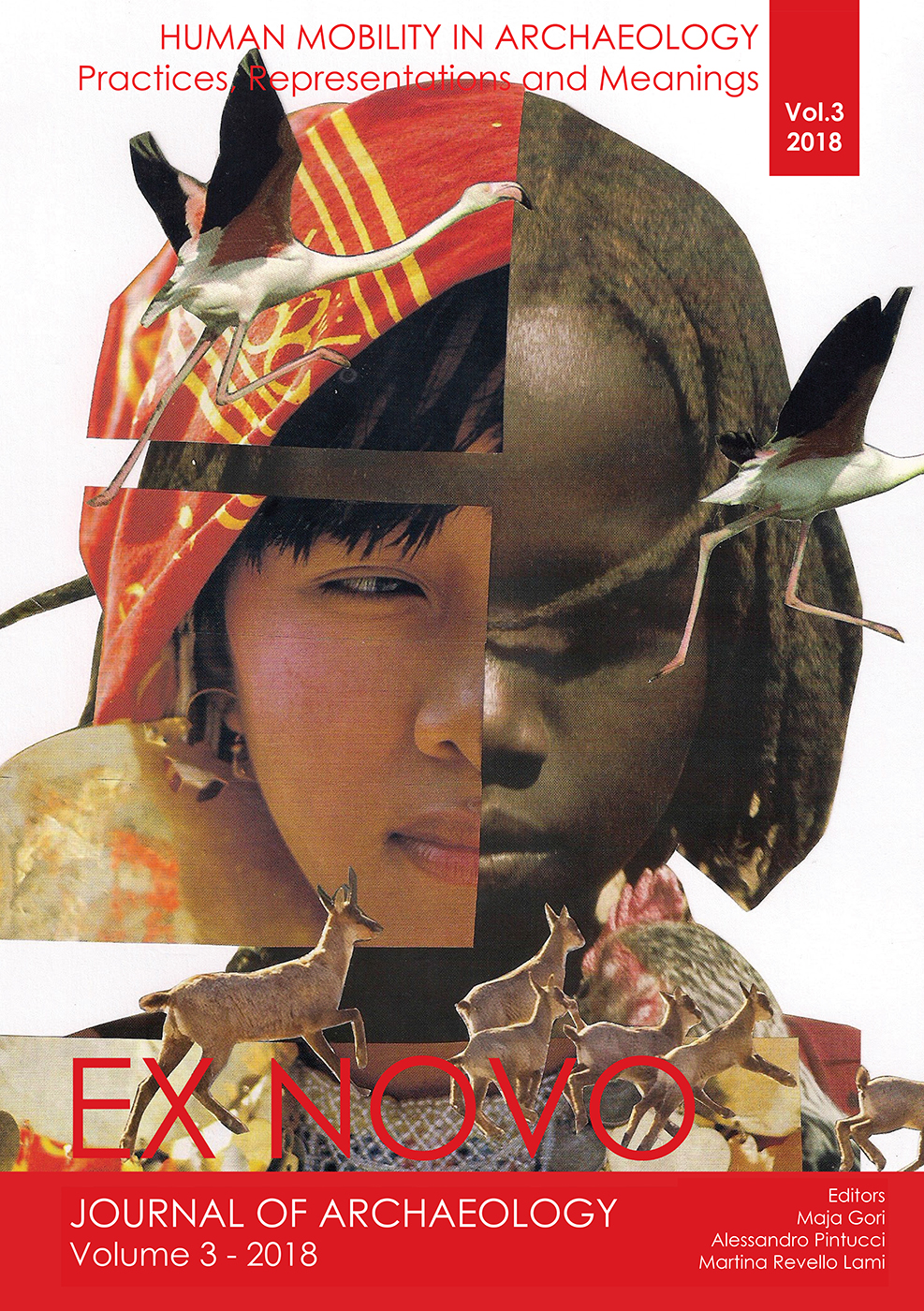From war material culture to popular heritage, and beyond
The “PSP - cancelli di Venosa” as paradigms of object biography theory
DOI:
https://doi.org/10.32028/exnovo.v3i0.384Keywords:
Object Biography, Material Culture, Life-Use, Second World War, War Heritage, Venosa-ItalyAbstract
Using object biography and Behavioral Archaeology as main theoretical frameworks this paper will examine how the pierced steel planks (PSP), also called Marston mat, become cancelli di Venosa (Venosa’s doors) within the social context where they happen to be located – in the immediate surroundings of Venosa airfield in this casestudy – where several actions occur such as reclamation, re-crafting, functional change, etc. These objects’ biography is, however, not restricted to this study area since they were used widely in the Second World War thus the paper aims to assess their geographical and chronological evolution. Furthermore, I will focus on the modern day utilization of the PSP-cancelli di Venosa and their promotion to the category of local heritage, a phenomenon often termed as heritagization, and their agency in the reproduction of war ideology and imperialistic narratives in Twentieth century popular culture.
References
st Bombardment Group (H). http://www.15thaf.org/49th_BW/461st_BG Accessed 29 March 2018
th Bombardment Group (H). http://www.484th.org/index.htm Accessed 25 March 2018
APPADURAI, A. 1986. The Social Life of Things: commodities in cultural perspectives. Cambridge: Cambridge University Press. https://doi.org/10.1017/CBO9780511819582
CANTORO, G., PELGROM, J., STEK, T.D., 2017. Reading a difficult landscape from the air. A methodological case-study from a WWII airfield in South Italy. Journal of Cultural Heritage 23, 12-9. https://doi.org/10.1016/j.culher.2015.09.009
CURREY, N.S., 1984. Landing Gear Design Handbook. Lockheed-Georgia Company. GONZÁLEZ-RUIBAL, A., AYÁN VILA, X., CAESAR, R., 2015. Ethics, archaeology, and civil conflict: the case of Spain, in: Ethics and the Archaeology of Violence. Springer: London, 113-136. https://doi.org/10.1007/978-1-4939-1643-6_7
GOSDEN, C., MARSHALL, Y., 1999. The cultural biography of objects. World Archaeology, 31: 169-78. https://doi.org/10.1080/00438243.1999.9980439
HERVA, V.-P., KOSKINEN-KOIVISTO, E., SEITSONEN, O. & THOMAS, S., 2016. 'I have better stuff at home': treasure hunting and private collecting of World War II artefacts in Finnish Lapland. World Archaeology 48: 267-81. https://doi.org/10.1080/00438243.2016.1184586
HERTOG, F., 2005. Time and Heritage. Museum International, 7: 7-18. https://doi.org/10.1111/j.1468-0033.2005.00525.x
HICKS, D.; BEAUDRY, M.C. 2010. Introduction: Material Cultural Studies, a reactionary view, in: HICKS, D.; BEAUDRY, M.C. (eds,), The Oxford Handbook of Material Culture Studies. Oxford: Oxford University Press, 1-21.
HICKS, D. 2010. The Material Cultural Turn. Event and Effect, in: HICKS, D.; BEAUDRY, M.C. (eds,), The Oxford Handbook of Material Culture Studies. Oxford: Oxford University Press, 25-98.
HOLTORF, C., 2002. Notes in the life history of a pot sherd. Journal of Material Culture 7(1): 49-71. https://doi.org/10.1177/1359183502007001305
JOY, J., 2009. Reinvigorating object biography: reproducing the drama of object lives. World Archaeology. 41: 540-56. https://doi.org/10.1080/00438240903345530
KNAPPETT, C., 2010. Communities of things and objects: a spatial perspective, in: L. MALAFOURIS & C. RENFREW (eds.), The Cognitive Life of Things: Recasting the Boundaries of the Mind. McDonald Institute Monographs, Cambridge, 81-9.
KOPYTOFF, I., 1986. The cultural biography of things: commodization as process, in: A. Appadurai, (ed.), The Social Life of Things: Commodities in Cultural Perspective. Cambridge: Cambridge University Press , 64-91. https://doi.org/10.1017/CBO9780511819582.004
LIBUTTI, P. & MANCINO, R., (eds.), 2009. I cancelli della guerra. 1944/ 1945 l'aeroporto americano di Venosa. Venosa: EdiMaior.
OLSEN, B., 2010. In Defense of Things: Archaeology and the Ontology of Objects. Rowman Altamira.
OLSEN, B., 2012. Archaeology : The Discipline of Things. Berkeley: University of California Press. https://doi.org/10.1525/9780520954007
PEÑA, T. J., 2007. Roman Pottery in the Archaeological Record. Cambridge: Cambridge University Press. https://doi.org/10.1017/CBO9780511499685
SCHIFFER, M.B., 1976. Behavioral Archaeology. New York: Academic Press.
SCHIFFER, M.B., 1987. Formation Processes of the Archaeological Record. Albuquerque: University of New Mexico Press.
SCHOFIELD, J., 2005. Combat archaeology: material culture and modern conflict. London: Duckworth.
SCHOFIELD, J., 2009. Aftermath: Readings in the Archaeology of Recent Conflict. London: Springer.
SEITSONEN, O., 2017. "War Junk" and Cultural Heritage: Viewpoints on World War II German Material Culture in the Finnish Lapland, in A.K. BENFER (ed.), War & Peace: Conflict and Resolution in Archaeology. Proceedings of the 45th Annual Chacmool Archaeology Conference. Alberta: University of Calgary, Calgary, 170- 83.
SHANKS, M., 1998. The Life of an Artifact in an Interpretative Archaeology. Fennoscandia Archaeologica, XV, 15-30.
SMITH, R.K., 1989. Marston Mat. AIR FORCE Magazine April 1989. SITO QUIRINALE. Scheda 45358 http://www.quirinale.it/onorificenze/insigniti/45358 Accessed on 6 June 2018.
THOMAS, J., 1996. Time, Culture and Identity: An Interpretive Archaeology. New York: Routledge. TIFFANY, J.B. (ed.) 1968. History of the Waterways Experiment Station.
WINTER, J.M., 2006. Remembering War: The Great War Between Memory and History in the Twentieth Century. London: Yale University Press.






